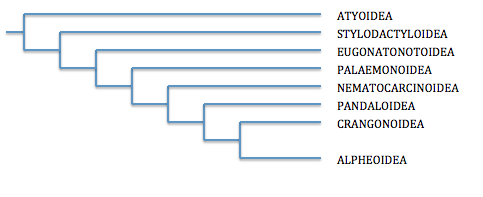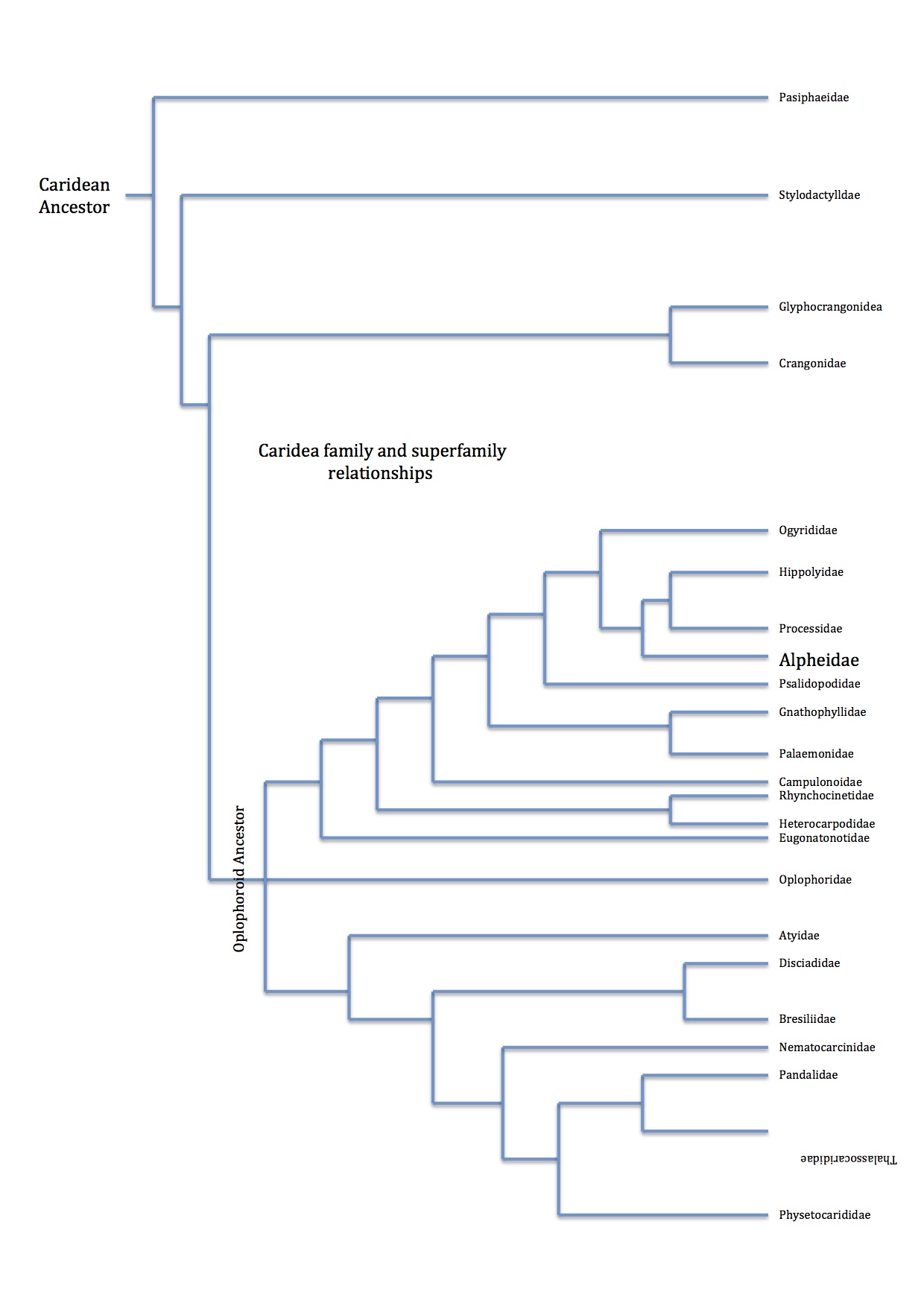Phylogenetics
Fossil record
The fossil records of carideans are poor (Wicksten, 2010). The earliest specimens of carideans are Alburnia petinensis and Palaemon antonellae (Garassimo & Bravi, 2003, 1998) from the family Palaemonidae, an ancient group of crustaceans. However, most fossils found in Jurassic and Cretaceous deposits are unidentifiable even to family (Glaessner, 1969)
Phylogeny
Caridean superfamilies, such as Alpheoidea of which A. strenuus belongs, are supposedly to have originated in the early Permian ~263 million years ago (Porter et al, 2005). These decapods are relatively new compared to reptant decapods such as Achelata, this clad includes polychelid and syllarid lobster which originated much earlier at about 417-234 million years ago (Porter et al, 2005).

Cladogram of superfamilies within Caridea (Christoffersen, 1989).
Cladograms of family and superfamily relationships have been produced by Bauer (2004) based on a key of families by Chace (1992) and incorporating the phylogeny proposed by Thompson (1967) tend to agree that Oplophoridae, Atyide, Pasiphaeidae, Bresiliidae and Nematocarcinidae are more ancient families while the family of which A.strenuus belongs (Alpheidae) and others such as Crangonidae and Glyphocrangonidae are more derived. However, the relationships between these families remain controversial on the basis of new analyses such as ribosomal RNA genes, which question the validity of some superfamilies (Bracken et al, 2009).

Cladogram of family and superfamily realtionships within Caridea. Redrawn by Bauer (2004), After Thompson (1967).
|